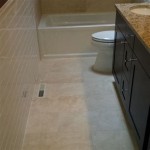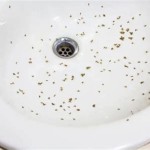```html
Delta Bathroom Faucet Aerator Wrench: A Comprehensive Guide
A bathroom faucet is a vital component of any modern household. Maintaining its functionality and appearance is paramount. One common maintenance task involves cleaning or replacing the aerator. The aerator is a small screen-like device screwed into the faucet's tip, designed to mix air with water, creating a smoother, splash-free flow. Over time, mineral deposits and debris can accumulate in the aerator, reducing water pressure and affecting the overall performance of the faucet. Removing the aerator for cleaning or replacement often requires a specialized tool, commonly referred to as a Delta bathroom faucet aerator wrench.
This article provides a comprehensive overview of the Delta bathroom faucet aerator wrench, exploring its purpose, different types available, usage instructions, maintenance tips, and troubleshooting common issues. Understanding these aspects can empower homeowners to perform routine maintenance on their Delta bathroom faucets, ensuring optimal performance and extending the lifespan of their plumbing fixtures.
Understanding the Delta Bathroom Faucet Aerator Wrench
The primary function of a Delta bathroom faucet aerator wrench is to safely and effectively remove and reinstall the aerator without causing damage to the faucet's finish or the aerator itself. Standard pliers or adjustable wrenches can scratch or mar the faucet’s surface, potentially voiding the warranty or detracting from the faucet's aesthetic appeal. The Delta aerator wrench is specifically designed to grip the aerator securely while minimizing the risk of cosmetic damage.
Delta Faucet Company designs and manufactures a range of faucets, each with slightly different aerator designs. As such, multiple types of aerator wrenches are available. Some are universal, designed to fit a variety of aerator sizes, while others are specifically tailored to certain Delta faucet models. Using the correct wrench ensures a proper fit and prevents slippage, making the removal and installation process smoother and safer. The wrench provides leverage, allowing the user to apply the necessary torque without straining or risking damage to the faucet body.
The aerator wrench often features a rubberized or plastic coating on the contact points to further protect the faucet's finish. This softer material cushions the aerator and faucet from direct metal-to-metal contact, significantly reducing the chance of scratches or dents. The design of the wrench also considers the limited space around the faucet, allowing for easy maneuverability even in tight spaces.
Types of Delta Aerator Wrenches
Delta offers various aerator wrenches to accommodate the diverse designs of their faucet aerators. Identifying the correct type of wrench for a specific faucet model is crucial for successful aerator maintenance. Here are some common types:
Universal Aerator Wrenches: These wrenches are designed to fit a wide range of aerator sizes and styles. They typically feature adjustable jaws or multiple sized slots to accommodate different aerator diameters. Universal wrenches are a convenient option for homeowners who have multiple Delta faucets or are unsure of the exact aerator size.
Specific Model Wrenches: Delta also manufactures wrenches designed specifically for certain faucet models or series. These wrenches provide the most precise fit and are often recommended for high-end or specialty faucets. The product documentation will usually specify the proper aerator wrench model for the specific faucet.
Multi-Tool Wrenches: Some aerator wrenches are designed as multi-tools, incorporating other useful functions like valve stem removal tools or flow restrictor adjustments. These tools can be a cost-effective option for homeowners looking to perform a variety of faucet maintenance tasks. These combination tools provide versatility for other faucet related repairs.
Plastic Wrenches: Constructed from durable plastic, these wrenches are designed to be gentle on the faucet’s finish. They lack the robust strength of metal wrenches but are less likely to cause scratches or dents. These are usually included when purchasing the faucet. They are model specific due to the soft material used.
When selecting an aerator wrench, it is essential to consult the faucet's documentation or Delta's website to identify the recommended wrench type. Using the wrong wrench can damage the aerator housing or the faucet itself.
Using the Delta Bathroom Faucet Aerator Wrench: A Step-by-Step Guide
Removing and replacing an aerator using a Delta aerator wrench is a straightforward process. However, following these steps carefully can help ensure a successful and damage-free outcome.
Step 1: Preparation. Before starting, gather the necessary tools and materials: the correct Delta aerator wrench, a soft cloth or towel, and a replacement aerator (if necessary). Turn off the water supply to the faucet. This is usually done by closing the shut-off valves located under the sink. Place the soft cloth or towel over the drain to prevent any small parts from falling into the drain.
Step 2: Locating the Aerator. The aerator is located at the tip of the faucet, where the water flows out. It may be partially concealed within the faucet spout, depending on the model.
Step 3: Inserting the Wrench. Carefully insert the aerator wrench into the aerator housing. Ensure that the wrench is properly seated and that the teeth or grooves of the wrench are securely engaging with the aerator. For adjustable wrenches, adjust the wrench to fit snugly around the aerator.
Step 4: Loosening the Aerator. Gently turn the wrench counterclockwise to loosen the aerator. Avoid applying excessive force, as this can damage the aerator or the faucet threads. If the aerator is stuck, try applying a small amount of penetrating oil to the threads and let it sit for a few minutes before attempting to loosen it again.
Step 5: Removing the Aerator. Once the aerator is loosened, unscrew it completely by hand. Be careful as you remove the aerator, as there may be some residual water trapped inside.
Step 6: Cleaning or Replacing the Aerator. Inspect the aerator for mineral deposits or debris. If necessary, clean the aerator by soaking it in a solution of vinegar and water. Use a soft brush to scrub away any remaining deposits. If the aerator is damaged or severely clogged, replace it with a new one.
Step 7: Reinstalling the Aerator. Insert the cleaned or new aerator into the faucet spout. Hand-tighten the aerator clockwise. Then, use the aerator wrench to gently tighten the aerator until it is snug. Avoid over-tightening, as this can damage the threads or the aerator housing.
Step 8: Testing the Faucet. Turn the water supply back on and check for leaks around the aerator. If any leaks are present, gently tighten the aerator further. Run the faucet to ensure that the water flow is smooth and consistent.
Maintenance and Troubleshooting
Proper maintenance and occasional troubleshooting can extend the life of the aerator and the aerator wrench, ensuring efficient faucet operation. Regular cleaning of the aerator is recommended to prevent mineral buildup and maintain optimal water flow.
Cleaning the Aerator Wrench: After each use, clean the aerator wrench with a damp cloth to remove any debris or residue. Store the wrench in a dry place to prevent corrosion.
Troubleshooting a Stuck Aerator: If the aerator is difficult to remove, try the following:
Soaking in Vinegar: Apply a solution of vinegar and water to the aerator threads and let it sit for several hours or overnight. The vinegar can help dissolve mineral deposits that are causing the aerator to stick.
Applying Heat: Gently apply heat to the aerator housing using a hairdryer. The heat can help expand the metal and loosen the aerator.
Using Penetrating Oil: Apply a small amount of penetrating oil to the threads and let it sit for a few minutes before attempting to loosen the aerator. Ensure the penetrating oil is safe for potable water systems.
Checking for Damage: Inspect the aerator wrench for any signs of damage, such as cracks or worn teeth. Replace the wrench if necessary.
By following these maintenance and troubleshooting tips, homeowners can keep their Delta bathroom faucets functioning properly and avoid the need for costly repairs.
```
Delta Cache Aerator Wrench Rp52217 The Home Depot

Delta Cache Aerator Wrench Rp52217 The Home Depot

Aerator Wrench Rp90248 Delta Faucet

Delta Rp76076 Aerator And Wrench Build Com

Danco Dual Standard Aerator In The Faucet Aerators Department At Com

Rp51345 Delta Aerator And Wrench 1 5gpm Amre Supply

Faucet For Cache Aerator With Key Removal Wrench Tool Replacement Insert Sink M16 5 18 21 Restrictor Temu

Rp31705 Delta 1 5 Gpm Chrome Plated Vandal Resistant Bathroom Sink Faucet Aerator And Removal Wrench Vamac Inc

Aerator Wrench Cache Rp52217 Oem Delta Faucet Ereplacementparts Com

Delta Faucet Aerators At Com
Related Posts







